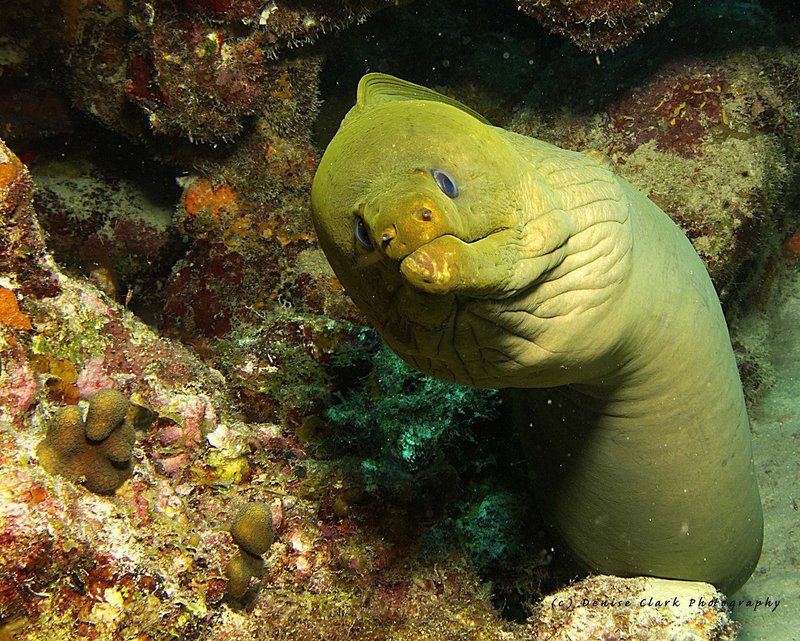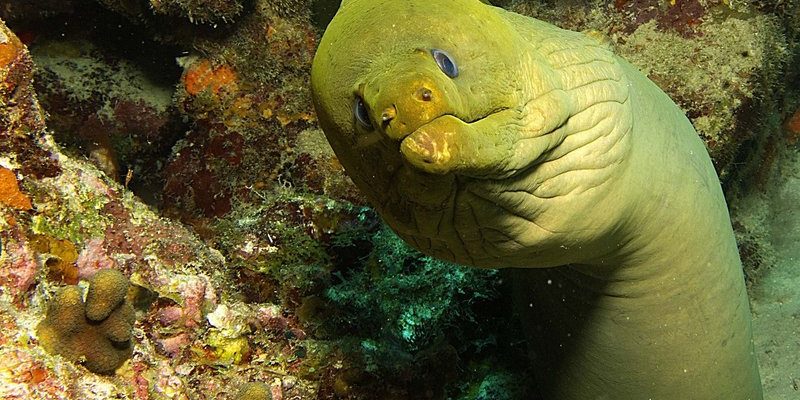
These eels aren’t just thriving for show; they possess unique features and behaviors that make them well-suited for their marine habitat. Let’s dive a bit deeper into the world of these remarkable creatures and explore how they’ve adapted to live happily in their underwater homes.
Body Structure and Camouflage
One of the most striking adaptations of the moray eel is its body structure. Unlike many fish, moray eels have elongated, flexible bodies that allow them to navigate tight spaces in rocky environments. You might be wondering how this helps them thrive. Well, this design gives them a stealthy edge, allowing them to hide from predators and ambush prey effectively.
Their skin also plays a critical role. It’s covered in a mucus layer that not only protects them against infections but also helps them glide smoothly through the water. Plus, the natural colors and patterns on their bodies often help them blend in with their surroundings. This camouflage technique is like wearing invisible clothes, making it much easier for moray eels to surprise their unsuspecting meals.
Furthermore, moray eels have a unique jaw structure. Their jaws can open wide, making it easier to latch onto prey. This powerful bite is complemented by sharp teeth, designed not for chewing but for gripping slippery fish. It’s a bit like having a fork and knife that are perfectly suited for a specific dinner!
Exceptional Sense of Smell
Moray eels boast an incredible sense of smell, which is essential for hunting in the often murky underwater environment. You might think of it as being like a bloodhound of the oceans. Their nostrils are specially adapted to pick up scents from a distance, helping them locate food even in low visibility.
This acute sense plays a vital role in their survival. Imagine not being able to see your lunch, but being able to sniff it out from yards away! Having that strong olfactory ability allows moray eels to detect chemical signals released by their prey, guiding them toward a meal with precision.
Moreover, this keen sense of smell also helps moray eels avoid danger. By detecting the scents emitted by potential predators, they can make a quick getaway before being spotted. It’s a smart survival tactic that illustrates how well-adapted they are to life underwater.
Behavior and Hunting Strategies
Moray eels have fascinating hunting behaviors that set them apart in the underwater ecosystem. Unlike most fish that might simply chase their prey, moray eels tend to be ambush predators. They often lie in wait among rocks and corals, striking quickly when unsuspecting fish come close.
This adaptation is like playing hide-and-seek in a game of tag—except moray eels are the stealthy seekers. They position themselves strategically to maximize their chances of a successful hunt.
Interestingly, moray eels also have a unique way of feeding. While they might look fierce, they often rely on a cooperative relationship with other fish. Some small fish, known as cleaner fish, will swim into the moray’s mouth to pick off parasites and dead tissue. In exchange, the moray gets a dental cleaning while the cleaner fish get a free meal. It’s a win-win situation, showcasing how adaptation isn’t just about individual survival but also about community and partnership.
Respiratory Adaptations
Breathing underwater can be quite different from breathing air, and moray eels have adapted accordingly. Unlike many fish that use gills to absorb oxygen, moray eels have an additional way to breathe. They use a combination of gill openings and muscular contractions to draw water over their gills efficiently.
This adaptation allows them to stay in tight spaces without needing to swim constantly to push water over their gills. You could think of it as having a versatile air filter—one that works whether they’re moving around or resting in their rocky homes.
By efficiently using their gills, moray eels can conserve energy, which is crucial for survival in an environment where food can sometimes be scarce. This energy conservation means they can remain alert and ready to pounce on prey whenever the opportunity arises.
Social Behavior and Territory
Moray eels are predominantly solitary creatures. They tend to stake out a territory—often in a specific coral reef or rocky area—where they feel safe. This territorial behavior is essential for reducing competition for food. By having their space, they can hunt and rest without the constant pressure of other eels encroaching on their turf.
Yet, they aren’t completely antisocial. While they may stay alone most of the time, moray eels can be seen interacting with other species. They often have friendly relationships with fish that live nearby, often allowing smaller fish to roam around them without any threat.
This social behavior shows another layer of their adaptation. By maintaining these relationships, they can create a balanced and harmonious environment, leading to more efficient hunting and living conditions.
Adaptability to Various Habitats
Moray eels are champions of adaptability. They can be found in a variety of underwater environments, from coastal reefs to deeper ocean waters. This ability to thrive in different habitats is a crucial part of their success story.
For instance, some species of moray eels prefer rocky shorelines, while others might choose to hang out in seagrass beds or coral reefs. This flexibility helps them evade predators and access various food sources, ensuring their survival in changing conditions.
Their adaptability goes beyond just location. Moray eels can also adjust their behavior depending on their environment. In areas with high predator populations, they might become more elusive and stealthy, while in safer spots, they can afford to be more active. This versatility is a testament to how well these creatures have adapted over time.
The moray eel is a captivating example of evolutionary adaptation. From their unique body structure and exceptional sense of smell to their clever hunting strategies and social behaviors, these eels have developed fascinating traits that help them thrive underwater.
These adaptations not only ensure their survival but also enrich the diverse ecosystem of the ocean. By understanding more about the moray eel’s life and habits, we gain insight into the larger marine world, highlighting the importance of each creature’s role in this delicate balance.
So, the next time you hear about these intriguing creatures or spot one while diving, remember all the clever adaptations that help them thrive in their underwater home. It’s a testament to nature’s creativity and resilience!

